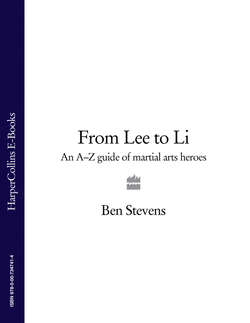Читать книгу From Lee to Li: An A–Z guide of martial arts heroes - Ben Stevens - Страница 23
CHOI, HONG HI
ОглавлениеThe purported founder of tae kwon do (although this is contested by some), Choi was born in 1918 in the remote Hwa Dae, Myong Chun district of what is now
North Korea. He was a somewhat frail and sickly child (this seems to be something of a pattern for famous ‘founding fathers’ of martial arts—refer here to Morihei Ueshiba).
Aged twelve, Choi was expelled from school for protesting against the Japanese authorities who were then in control of Korea. His father sent him to learn calligraphy—although so alarmed was the new teacher by Choi’s lamentable physical condition that he also arranged to have him taught the martial art of taek kyeon(’foot techniques’) as well.
Choi went to Japan in 1937, where within two years he’d become a black belt in karate. With the outbreak of the Second World War, Choi was forced to enlist in the Japanese army. However, when his links with the Korean Independence Movement were uncovered he was arrested, tried, and thrown into a cell.
This gave Choi some much-needed time and solitude in which to practise the martial art that would become tae kwon do. Soon the other prisoners were demanding that Choi teach them a little of what he knew—and Choi readily obliged. Finally, the situation threatened to descend into farce as even the jailers requested that their prisoner teach them what was—at heart—a mixture of taek kyeon and karate.
Choi was freed in August 1945 (according to some sources, just days before he was due to be executed for ‘treason’), and made his way to Seoul. There he was soon promoted to the rank of Lieutenant (ultimately he’d become a Major-General) in the South Korean army, taking this opportunity to teach soldiers—both American as well as Korean—tae kwon do.
In 1955, tae kwon do (’the way of the feet and the hands’) was formally recognised within Korea, with a special administrative board being appointed, and from there word concerning this new martial art soon spread across the globe. It became an official Olympic sport for the first time at the 2000 Summer Olympics in Sydney. (The middleweight gold medal that year was won by Cuban Ángel Matos, who was, however, disqualified for life in 2008 after he intentionally kicked a referee in the face at the Beijing Olympics.)
